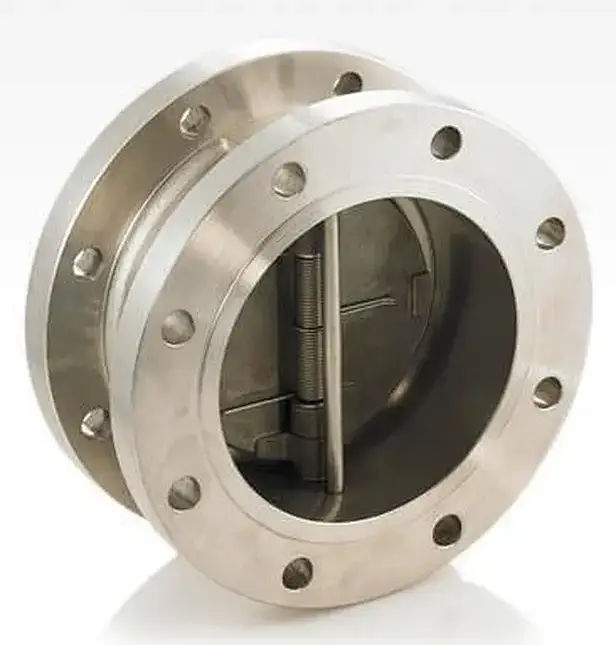
- Call Us
- +8618633052223
- njhdvlz@163.com
7월 . 17, 2024 12:25 Back to list
An Introduction to Dual Plate Check Valves: Definition, Types, Features and More
An Introduction to Dual Plate Check Valves: Definition, Types, Features and More
Dual plate check valves are mechanical valves that prevent backflow and ensure fluid flow in one direction. For anyone interested in learning more about this significant piece of engineering technology, this article provides a comprehensive overview of its design, principles, and applications.
Dual plate check valves, also known as check valves with two plates and two plugs. They are used in major HVAC/R systems, water supply lines, oil/natural gas pipelines, steam and condensate systems to regulate liquid, gas, steam, and steam volumes.
There are several end connection types available, including lightweight, slim, and easy to install. These valves are highly efficient with highly efficient hydrodynamic properties and pressure loss losses.
 |
What Is a Dual Plate Check Valve?
Check valves are mechanical devices that open and close automatically based on whether fluid flows in one direction or the reverse. This prevents damage to pipe systems' mechanical components.
The two most common types of check valves are swing and dual plate. Swing check valves open and shut according to fluid movement, whereas dual plate check valves open only when forward flow occurs and close when reverse flow occurs.
A dual plate check valve (or a dual plate non-return valve) is a valve that can be used for a wide variety of applications and is considerably stronger, lighter, and smaller in size than a swing check valve or a lift check valve that uses conventional springs.
The double plate check valve is constructed with two spring-loaded plates hinged on a central hinge pin. When the fluid flow decreases the fluid orsion spring takes action without reversing the fluid.
All these features make the dual plate check valve one of the most efficient valve designs on the market. This is because it offers the twin advantages of no water hammer and no slam at the same time.
Types of Dual Plate Check Valve
The check valve plays a vital role in systems designed to prevent water from flowing back and forth between containers. This prevents flooding and other complications due to water flowing back and forth.
Dual plate check valves come in various types, such as reduce-flow check valves, non-slam check valves, and retainer-less check valves, each with its own advantages and disadvantages.
- Reduced-Flow Check Valve
In numerous industries and applications, reduced-flow check valves allow fluid to pass in one direction while blocking flow in the opposite direction. Reduced-flow check valves allow one-way flow but prevent reverse flow.
Make sure the check valve you choose comes from a reputable company when selecting one for your application. Check valves come in numerous sizes and from numerous manufacturers.
- Non-Slam Check Valve
A non-slam check valve prevents liquid backflow by opening when inlet pressure is superior to downstream pressure, but closing again when reverse pressure builds up to ensure no backflow.
There are various types of valves, in all shapes and sizes. They are often installed in pipe systems to control fluid flow, such as water, air, or steam.
- Wafer Check Valve
With their slim design, wafer check valves (or dual plate check valves) can fit between flanges without gaskets, making them ideal for applications with limited space.
There are a wide range of applications for these check valves, in valves. These include petroleum, chemical, pharmaceutical, food and beverage production, mining, steam power generation plants, and oil and gas industry applications. Various styles and sizes are available to meet different needs.
- Retainerless Check Valve
Unlike traditional check valves, retainerless check valves do not require drilling through a pipe to install. Consequently, these check valves are particularly useful in applications where hazardous or corrosive gases are passed through them.
A retainerless check valve, also known as a lug-type check valve, can be mounted directly to pipe flanges using flanges in accordance with API 594.
Dual Plate Check Valves Features
- Their applications include electric power, petroleum refining, petrochemical engineering, offshore oil, and chemical engineering.
- Despite their light weight, dual plate check valves are compact, have updated interior designs, and do not leak from the outside.
- Due to their low pressure drop and long service life, dual-plate check valves reduce energy costs.
- Installation is easy and convenient, and both horizontal and vertical pipes can be used.
Working Principles of Dual Plate Check Valve
- Dual-plate check valves have two spring-loaded plates or discs held in place by a hinge mechanism, which allows the valves to function as one unit.
- During forward flow, the plates or discs open, allowing the fluid to pass through as it moves forward.
- If the flow reverses, the spring tension and the fluid pressure cause the plates or discs to close due to the reversed flow.
- By closing the plates or discs, backflow is prevented, and the system is protected from damage caused by pressure surges which can otherwise cause damage to the system.
Install Check Valves Taking Care of These Matters
- Make sure that the large check valves do not bear outside weight to avoid pipeline pressure.
- The direction of medium flow should be aligned with the arrow on the valve body during installation.
- The vertical lift check valve should be installed on the vertical pipe to prevent leaks.
- On the horizontal pipe, it is recommended to install the horizontal lift check valves.
Latest news
-
Double Flanged Short Pattern Butterfly Valve | Compact, Efficient Flow
NewsAug.01,2025
-
Precise 3-Inch Butterfly Valve Dimensions | Durable Flow
NewsJul.31,2025
-
3 Butterfly Valve Dimensions | GPT-4 Turbo Precision Specs
NewsJul.31,2025
-
Stainless Steel Sanitary Butterfly Valve for Hygienic Flow Control
NewsJul.30,2025
-
High-Performance Groove Butterfly Valve for Easy Installation
NewsJul.30,2025
-
High-Quality 2 Inch Butterfly Valve for Precise Flow Control
NewsJul.29,2025
